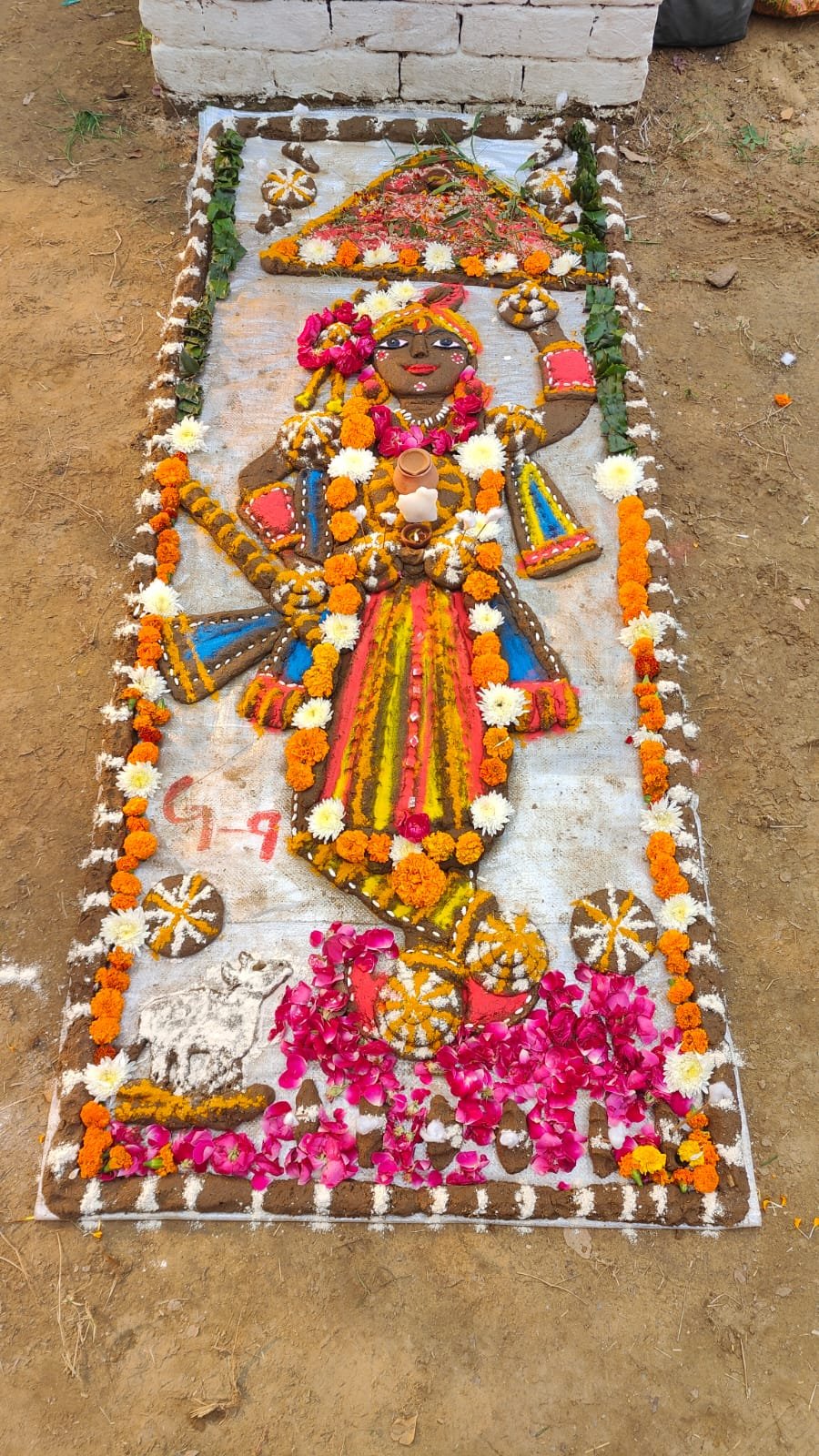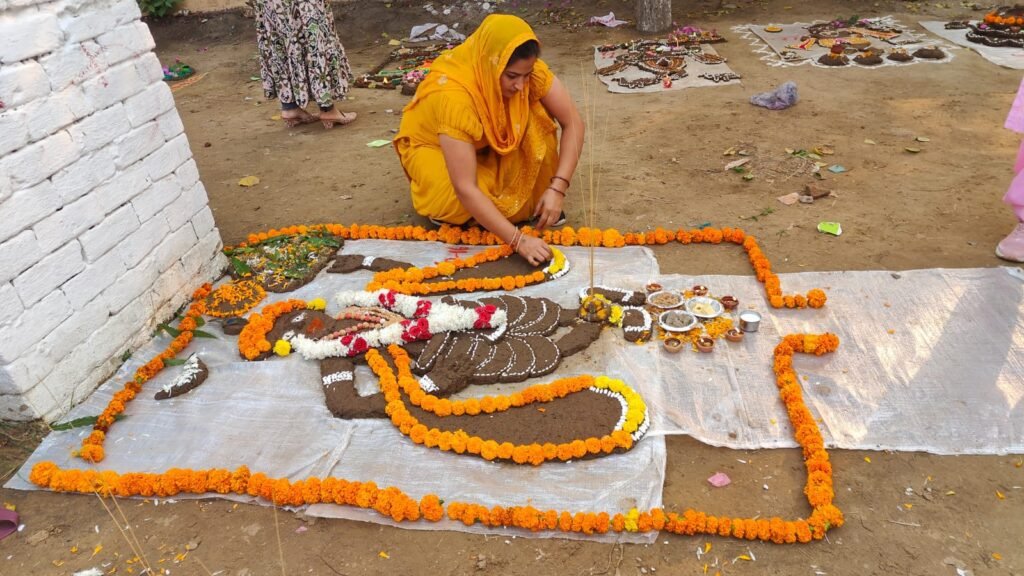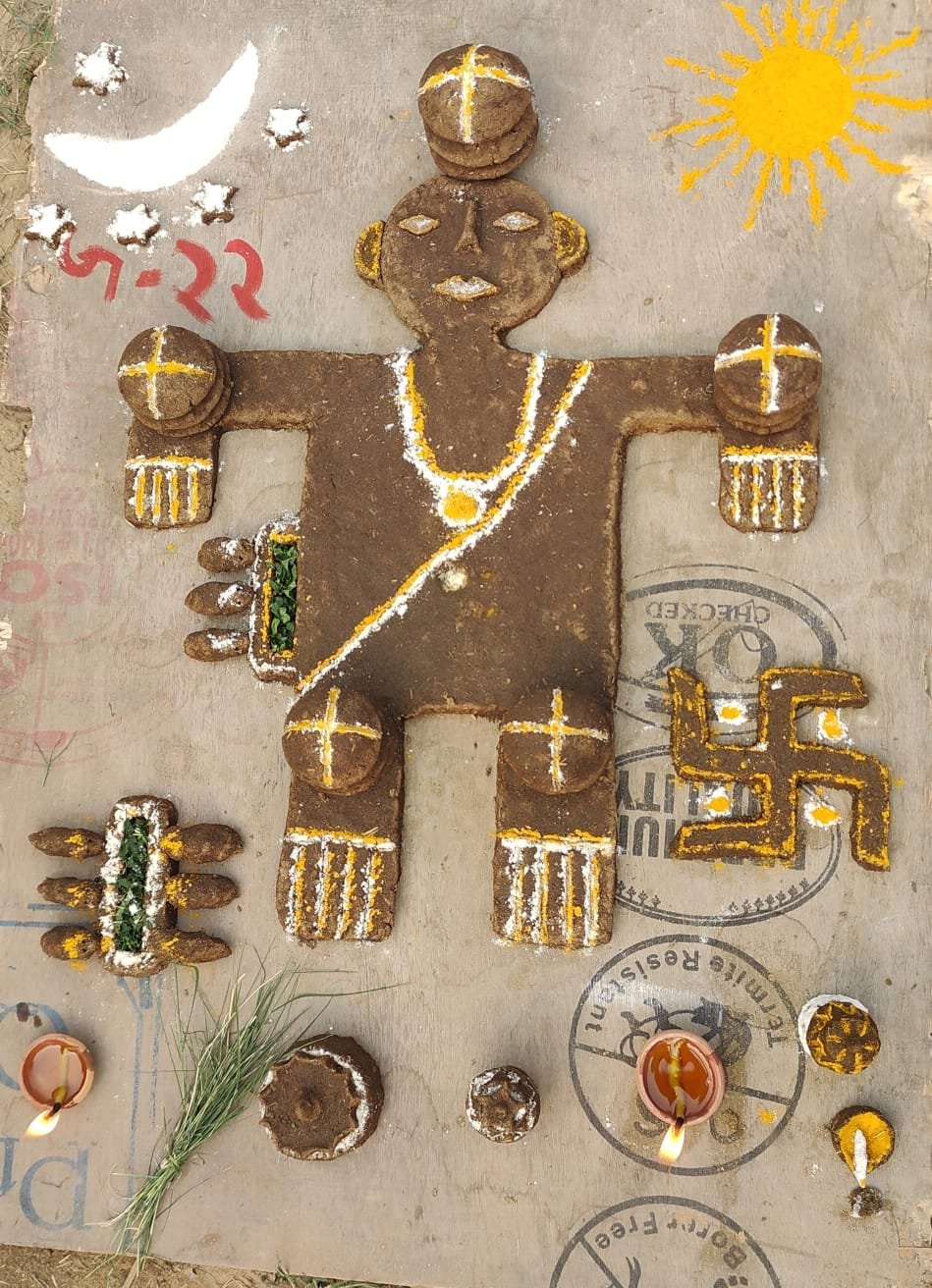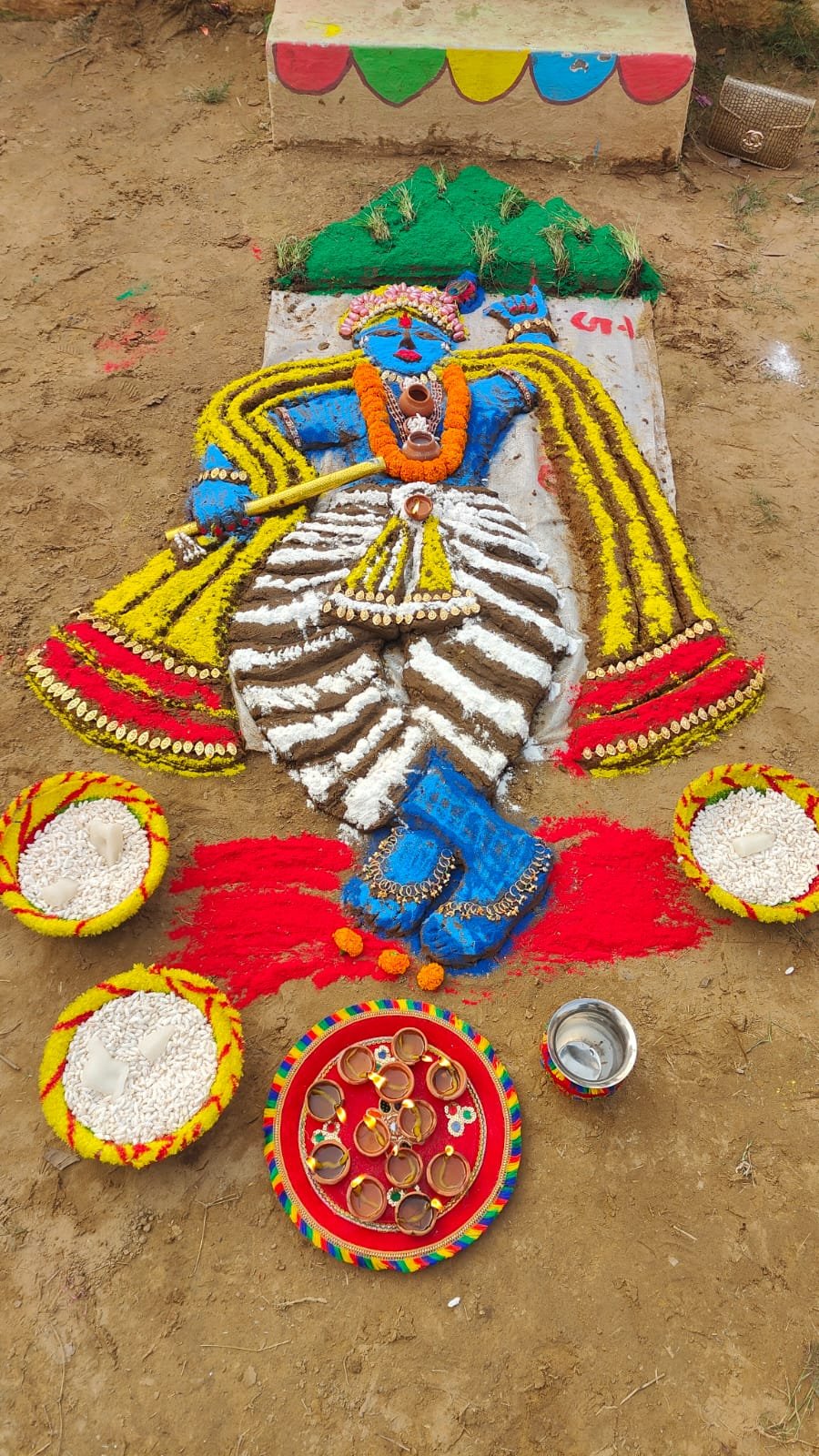An amazing art of recreating the revered Govardhan Mountain in a decorative human form, using ‘gobbar’ (cattle excreta) as a medium, on the occasion of Govardhan Puja in Haryana was seen to be slowly moving towards oblivion.
In an effort to preserve and promote the art, practised by rural women, the Haryana state department for Art and Cultural Affairs in association with an NGO for the first time ever organised a competition for women artists of Haryana domicile in the heart of the state, Rohtak.
 Organised at short notice, and publicised only through social media on Govardhan Puja day on November 13, a day after Diwali, the event turned out quite a success. According to sources, as many as 42 women from across the state registered for the event, out of which 36 arrived at the venue, Andy Studio in Rohtak, and participated enthusiastically.
Organised at short notice, and publicised only through social media on Govardhan Puja day on November 13, a day after Diwali, the event turned out quite a success. According to sources, as many as 42 women from across the state registered for the event, out of which 36 arrived at the venue, Andy Studio in Rohtak, and participated enthusiastically.
Their talent speaks through the pictures displayed with this write-up.


The winner pocketed a cash prize of Rs 11,000, first runner-up Rs 7100 and second runner-up Rs 5100. Seeing the exceptional talent, two other participants were presented cash prizes of Rs 2100 ech. Five more women were honoured with a cash prize of Rs 1100 each as encouragement.
None of the women went empty handed, the rest of them being handed Rs 500 each in appreciation of their participation.
Encouraged by the success of the competition, organising such events in different parts of the state from next year is being considered.


According to knowledgeable sources, Govardhan Puja is linked to the religious beliefs of the people. Cows enjoy an honoured status of ‘Gau mata’ in their lives, which is why they worship cows. Its ‘gobbar’ is considered sacred and has traditionally been used for plastering the walls of religious places and residential quarters. Meals were also traditionally cooked in homes using ‘gobbar’ cakes as fuel. Cow urine is used as a vital ingredient in the preparation of ayurvedic medicines.
Govardhan Puja festival is celebrated with fervour in many border districts of Easte Haryana and followed in adjoining Weste Uttar Pradesh and Northe Rajasthan. A day after Diwali women get up at dawn, and using ‘gobbar’ as a medium, give human shape to the revered Govardhan mountain with its hands, feet, head, body, et al. The human form is then placed on the ground.
According to belief, Lord Krishna had lifted Govardhan mountain on his little finger to protect the residents of Vrindavan from the wrath of an arrogant Indra ‘devta’ (demi God of rain). Lord Krishna had later sermonised the people to worship Nature in the form of a symbolic Govardhan mountain, instead of Indra.


Next day small ‘gobbar’ balls are made from the human form of Govardhan mountain. These balls, considered very sacred, are used while performing ceremonies on auspicious occasions or used as fuel in ‘havan-yajnas’.


Oxen are a critical resource for farmers practising traditional form of cultivation and they treat the animals as their sons. In mode times, through oxen have been replaced by heavy machinery and implements in farming, oxen are still used for ploughing and other chores in many areas. The jingling of the ‘ghungroos’ or bells is like music to the farmers’ ears and is a source of relaxation and entertainment for them.



